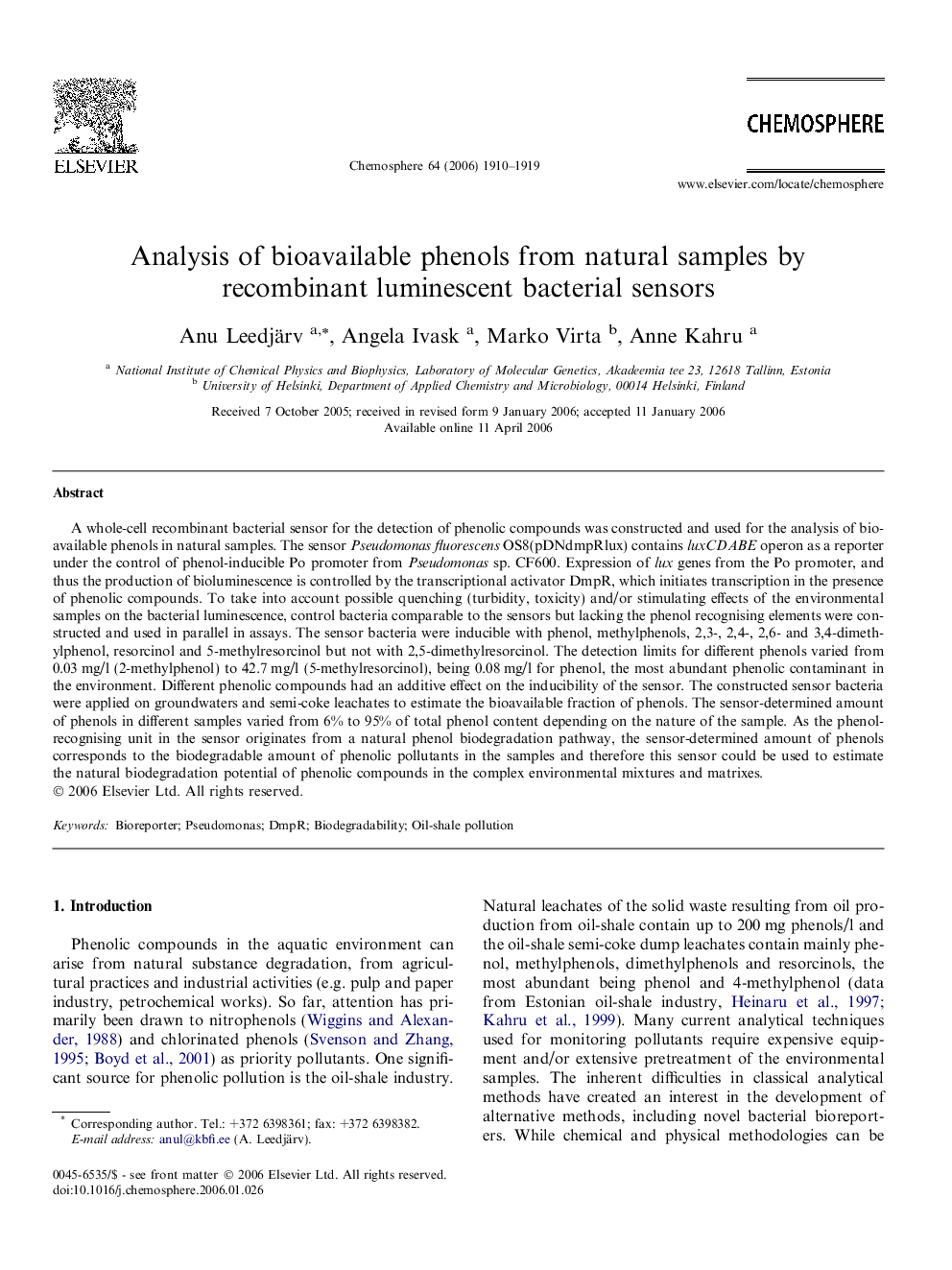| کد مقاله | کد نشریه | سال انتشار | مقاله انگلیسی | نسخه تمام متن |
|---|---|---|---|---|
| 4416337 | 1307777 | 2006 | 10 صفحه PDF | دانلود رایگان |

A whole-cell recombinant bacterial sensor for the detection of phenolic compounds was constructed and used for the analysis of bioavailable phenols in natural samples. The sensor Pseudomonas fluorescens OS8(pDNdmpRlux) contains luxCDABE operon as a reporter under the control of phenol-inducible Po promoter from Pseudomonas sp. CF600. Expression of lux genes from the Po promoter, and thus the production of bioluminescence is controlled by the transcriptional activator DmpR, which initiates transcription in the presence of phenolic compounds. To take into account possible quenching (turbidity, toxicity) and/or stimulating effects of the environmental samples on the bacterial luminescence, control bacteria comparable to the sensors but lacking the phenol recognising elements were constructed and used in parallel in assays. The sensor bacteria were inducible with phenol, methylphenols, 2,3-, 2,4-, 2,6- and 3,4-dimethylphenol, resorcinol and 5-methylresorcinol but not with 2,5-dimethylresorcinol. The detection limits for different phenols varied from 0.03 mg/l (2-methylphenol) to 42.7 mg/l (5-methylresorcinol), being 0.08 mg/l for phenol, the most abundant phenolic contaminant in the environment. Different phenolic compounds had an additive effect on the inducibility of the sensor. The constructed sensor bacteria were applied on groundwaters and semi-coke leachates to estimate the bioavailable fraction of phenols. The sensor-determined amount of phenols in different samples varied from 6% to 95% of total phenol content depending on the nature of the sample. As the phenol-recognising unit in the sensor originates from a natural phenol biodegradation pathway, the sensor-determined amount of phenols corresponds to the biodegradable amount of phenolic pollutants in the samples and therefore this sensor could be used to estimate the natural biodegradation potential of phenolic compounds in the complex environmental mixtures and matrixes.
Journal: Chemosphere - Volume 64, Issue 11, September 2006, Pages 1910–1919